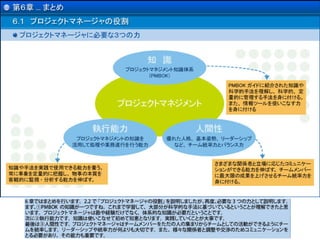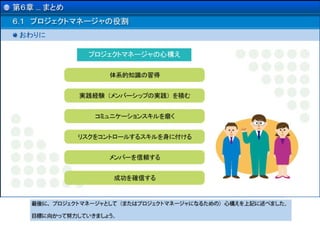1 of 3
Downloaded 25 times



Ad
Recommended
Arch TCP/IP Introduction
Arch TCP/IP IntroductionMasahiko Hara
?
1. This document provides an overview of the TCP/IP protocol stack in 3 levels.
2. It describes the four layers of the TCP/IP protocol stack - the link layer, internet layer, transport layer, and application layer. It provides examples of common protocols that operate at each layer like IP, TCP, UDP, FTP, and HTTP.
3. It uses diagrams to illustrate how data moves through the stack layers between two devices communicating over a local area network using the FTP application protocol as an example. The diagrams show how each layer and protocol in the stack adds its own header to the package before handing it down to the next layer.PMBOK概要 & CG制作管理にどう役立てるか?
PMBOK概要 & CG制作管理にどう役立てるか?Satoshi SASAKI
?
颁骋制作现场でのプロジェクトマネジメント讲座:笔惭叠翱碍概论です。3顿颁骋以外のデジタルコンテンツ开発、デザイン业务も同様にご活用ください。Oracle talk 20131213
Oracle talk 20131213Arshal Ameen
?
The document outlines features and updates related to JSF 2.2, CDI 1.1, and other Java technologies including bean validation and JTA. It presents an agenda filled with topics such as asynchronous beans, RESTful services through JAX-RS 2.0, and batch processing capabilities. It concludes with insights on coding practices and offers contact information for further queries.More Related Content
Viewers also liked (18)
Arch TCP/IP Introduction
Arch TCP/IP IntroductionMasahiko Hara
?
1. This document provides an overview of the TCP/IP protocol stack in 3 levels.
2. It describes the four layers of the TCP/IP protocol stack - the link layer, internet layer, transport layer, and application layer. It provides examples of common protocols that operate at each layer like IP, TCP, UDP, FTP, and HTTP.
3. It uses diagrams to illustrate how data moves through the stack layers between two devices communicating over a local area network using the FTP application protocol as an example. The diagrams show how each layer and protocol in the stack adds its own header to the package before handing it down to the next layer.PMBOK概要 & CG制作管理にどう役立てるか?
PMBOK概要 & CG制作管理にどう役立てるか?Satoshi SASAKI
?
颁骋制作现场でのプロジェクトマネジメント讲座:笔惭叠翱碍概论です。3顿颁骋以外のデジタルコンテンツ开発、デザイン业务も同様にご活用ください。Oracle talk 20131213
Oracle talk 20131213Arshal Ameen
?
The document outlines features and updates related to JSF 2.2, CDI 1.1, and other Java technologies including bean validation and JTA. It presents an agenda filled with topics such as asynchronous beans, RESTful services through JAX-RS 2.0, and batch processing capabilities. It concludes with insights on coding practices and offers contact information for further queries.More from Enpel (16)
Ad